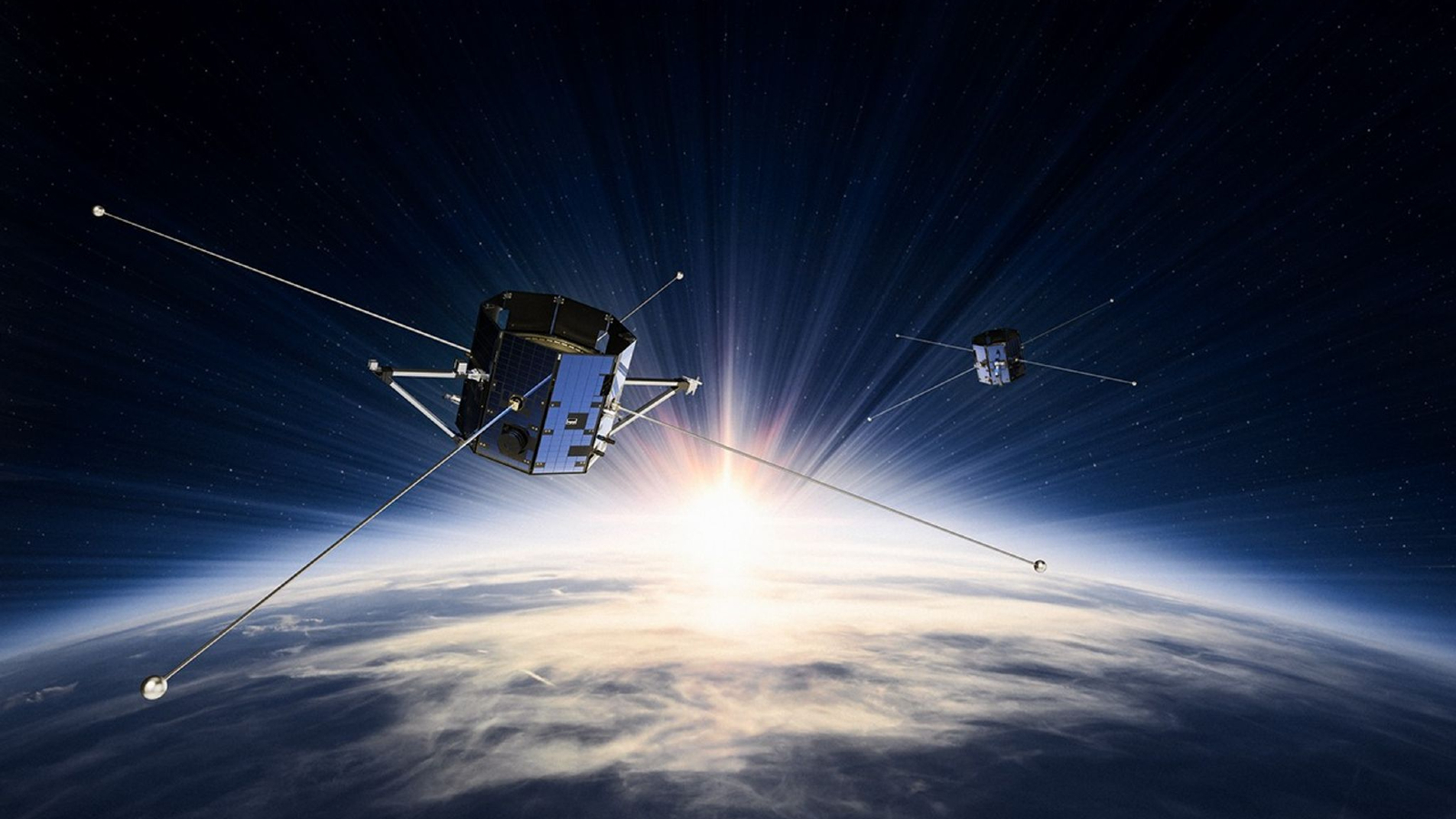NASA’s TRACERS (Tandem Reconnection and Cusp Electrodynamics Reconnaissance Satellites) mission is set to blast off from California’s Vandenberg Air Force Base on Tuesday (July 22), embarking on a quest to learn more about how the solar wind interacts with our planet’s magnetic field.
TRACERS is composed of twin satellites that will study how surges in the solar wind trigger magnetic reconnection in Earth’s magnetosphere; such reconnection leads to charged particles being funneled down the magnetic cusps over the poles, sparking auroral lights and geomagnetic storms. By having two satellites in close proximity to one another, TRACERS will be able to see how areas of Earth’s magnetic field that are undergoing reconnection — the snapping and recombining of field lines — change over short time frames. This reconnection happens as activity between the sun’s solar wind (a continual stream of charged particles from our star) occasionally moves around denser patches stemming from coronal mass ejections. Meanwhile, Earth’s magnetic field waxes and wanes during this process.
You can watch the TRACERS launch on NASA’s YouTube channel, with the launch window opening at 2:13pm EDT (11:13am PDT/7:13pm BST). We will also be carrying the stream right here on Space.com. It will start 15 minutes prior to the launch window opening.
TRACERS will launch for a low-Earth orbit of 367 miles (590 kilometers) on a SpaceX Falcon 9 rocket alongside three additional NASA missions. These include the Athena EPIC (Economical Payload Integration Cost) SmallSat, which will demonstrate a new way of more efficiently placing remote-sensing (or rather, Earth-observing) instruments into orbit.
Another mission flying on the same Falcon 9 rocket is the Polylingual Experimental Terminal, which is a new technology that will demonstrate how spacecraft can roam between communication networks in space, improving satellite connectivity. Finally, a cubesat called the Relativistic Electron Atmospheric Loss (REAL) mission will explore how high-energy particles in Earth’s Van Allen radiation belts are scattered into the atmosphere, with the aim of eventually mimicking this natural scattering to remove potentially harmful particles from getting in the way of satellites and damaging their circuitry.
